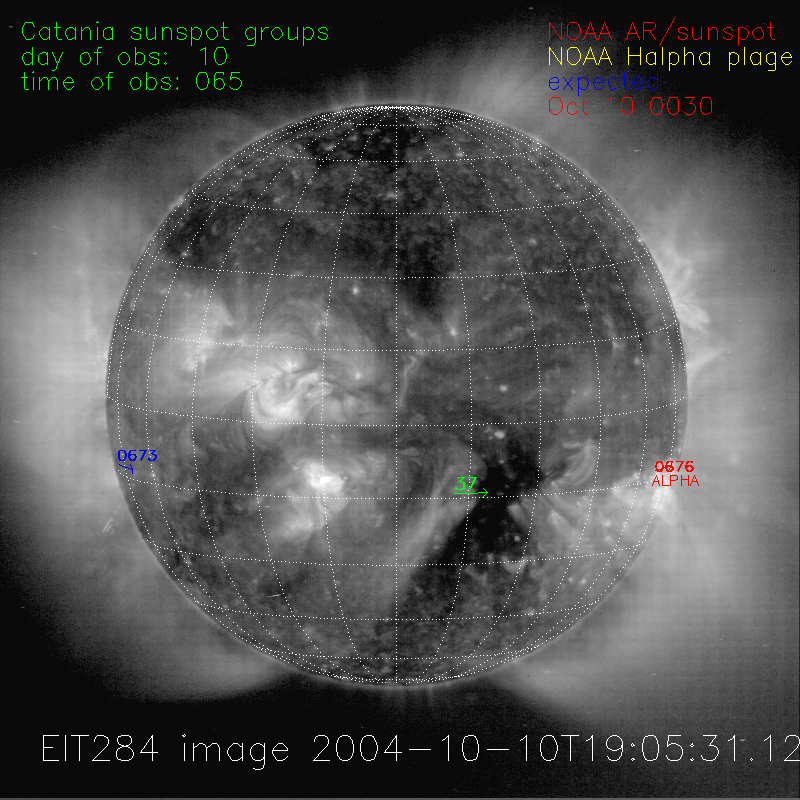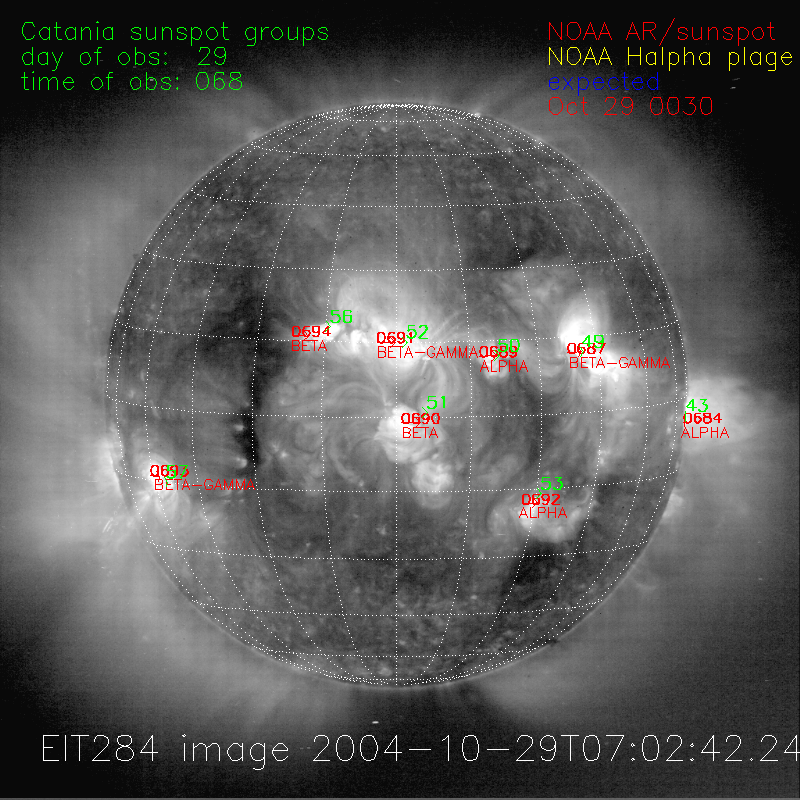From October 10, up to October 16, the Sun was veiled in silence and produced hardly any flare. On October 17, the Sun changed track and gave birth to several sunspot groups during the next days.
After a period of no flaring activity and spotless days, the Sun took a new start. From October 17 several sunspot groups popped up, on October 19 several of them evolved already to a magnetic beta NOAA labelling. From that moment, Catania numbers and active regions numbers populated the solar disk. The background x-ray radiation started to increase on October 19 denoting that something was going to happen. Indeed, on October 20, sunspot group 49 (NOAA 0687) rotated over the east limb and generated an extremely short duration M2.6 flare. Late October 21, it produced a C9.9 flare, on October 22, a M2.1 flare. October 23, once again a C9.9 flare occurred and on October 24 a M2.3 flare. Since October 28, we have to deal with a new at the east located sunspot group, number 57, NOAA 0693. This group exist of 2 large very sunspots. Probably a worthy successor of nr 49.


The figures above are EIT 284 pictures taken by the SOHO spacecraft on 10 and 29 October. An overlay with the Catania numbering (green) of the sunspot groups and the NOAA numbering (red) of the active regions, is put on top of it. For each day, such a "combi" map (recent) as we call it, is made available on our website. The picture is clickable and gives information (number of spots, area, past flaring history, statistical probability for flare-outburst...) on the sunspot groups.





